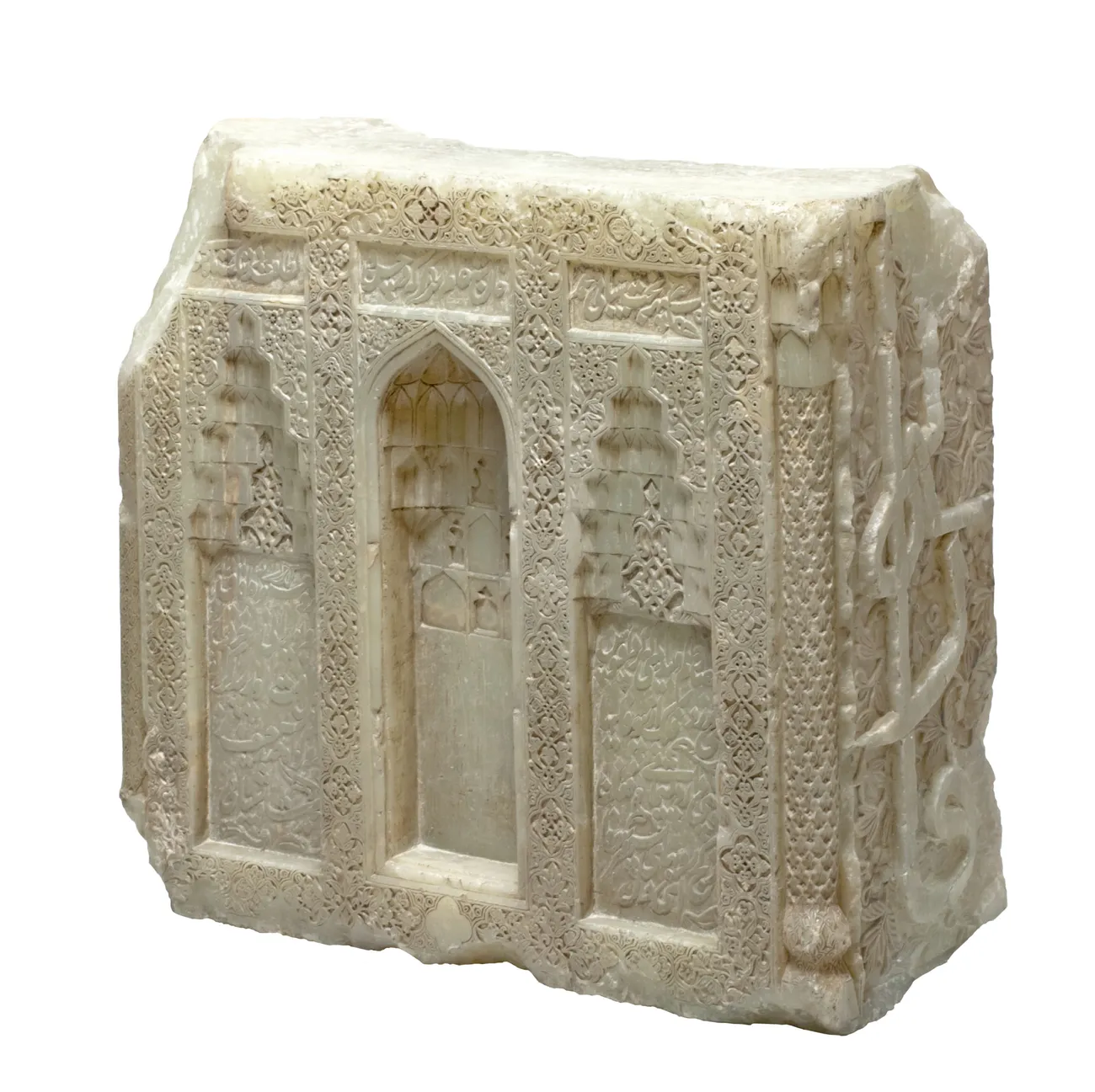“Here lies the happiness heaven of the Shaybanids’ Muhammad Khan, the sovereign of the world, who for beauty and tenderness was the envy of the Canaanite month (Joseph the Beautiful). Fate regrets the cruelty and injustice it has committed, the heavens repent of infidelity. Woe is in the heart, from the “curved path” of the wrong sky, because its inhabited part of the world is aimed at destruction. If the mind asks you the chronogram of the year of his death, tell it: “ah, one hundred regrets about the Shaybanids’ Muhammad Shah”.
Jade – which represents immortality – was highly valued in China and Mongolia: it is no accident that the tombstone of Amir Timur in Gur-e-Amir was also made of a dark green variety of this stone.
The ornament on the tombstone of Shaybani Khan is typical for the 14th – 15th centuries. However, the epitaph itself, placed in two niches along the sides of the mihrab or the entrance and above them, was made in that variety of the Nasta‘līq script that was widespread in Central Asia in the 16th – 17th centuries.
Thus, one can assume the use of the front-end part of the Timurid time to crown the name of the Uzbek Khanate founder in Mavarannakhr with immortality. Apparently, this was due to his sudden death in the campaign against Safavid dynasty.. The remains of Shaybani Khan were brought to and buried in a dakhma: a rectangular, marble-fronted platform in the courtyard of the madrasa he built north of the Samarkand Registan. Later, a large black marble slab was installed over his tomb, which stood among the stelae of other Samarkand Shaybanids. The onix tombstone was moved to the old (Timurid) citadel of Samarkand, where it was found in the ruins of the Ak-dervaz gate in the 1960s.
You can learn more about the topic in the book-album "Collection of the State Hermitage Mavarannakhr Art 8th – 15th centuries" (XV volume) from the series "Cultural Legacy of Uzbekistan in the World Collections".
The main sponsor of the project is the oilfield services company Eriell-Group.

